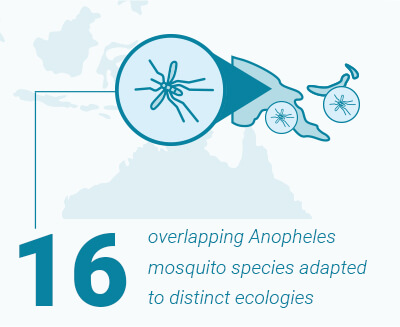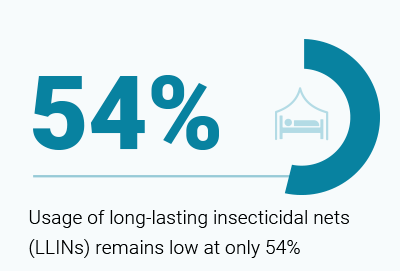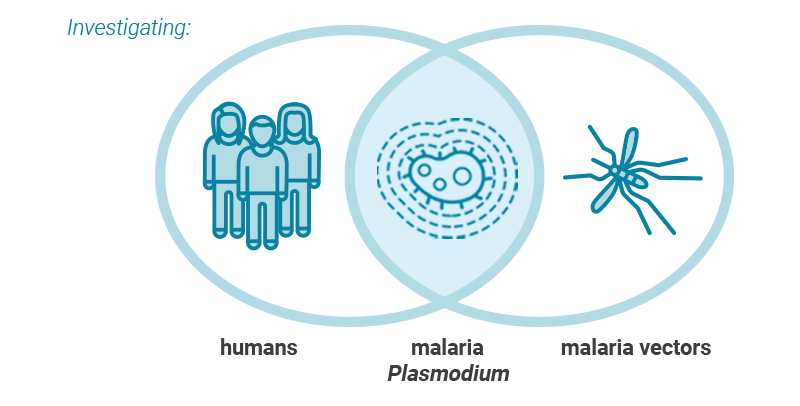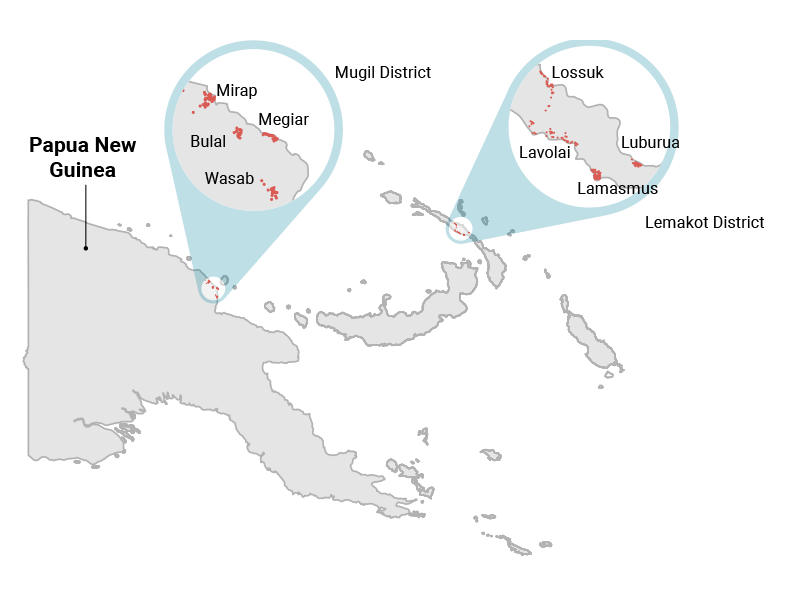
Ongoing Malaria Transmission in Papua New Guinea
Examining the role of humans, vectors and parasites as drivers of malaria
Why this project?
Historically, the incidence of malaria in Papua New Guinea (PNG) has been amongst the highest in the South-West Pacific region. Success of malaria control efforts in PNG is highly inconsistent across areas, resulting from different rates of transmission.

The malaria parasite is transmitted by more than 16 overlapping Anopheles mosquito species adapted to distinct ecologies.
The epidemiology of malaria in the country and consequently, its control are complex and challenging.

The aim
To investigate the prevalence of ongoing malaria transmission and to determine how humans, vectors and their interactions influence human infection by malaria in two sites in Papua New Guinea.

The research sites
Four villages (Megiar, Mirap, Bulal, Wasab) in the Mugil District, Madang Province
Four villages (Lossuk, Luburua, Lavolai, Lamusmus) in the Lemakot District, New Ireland Province


